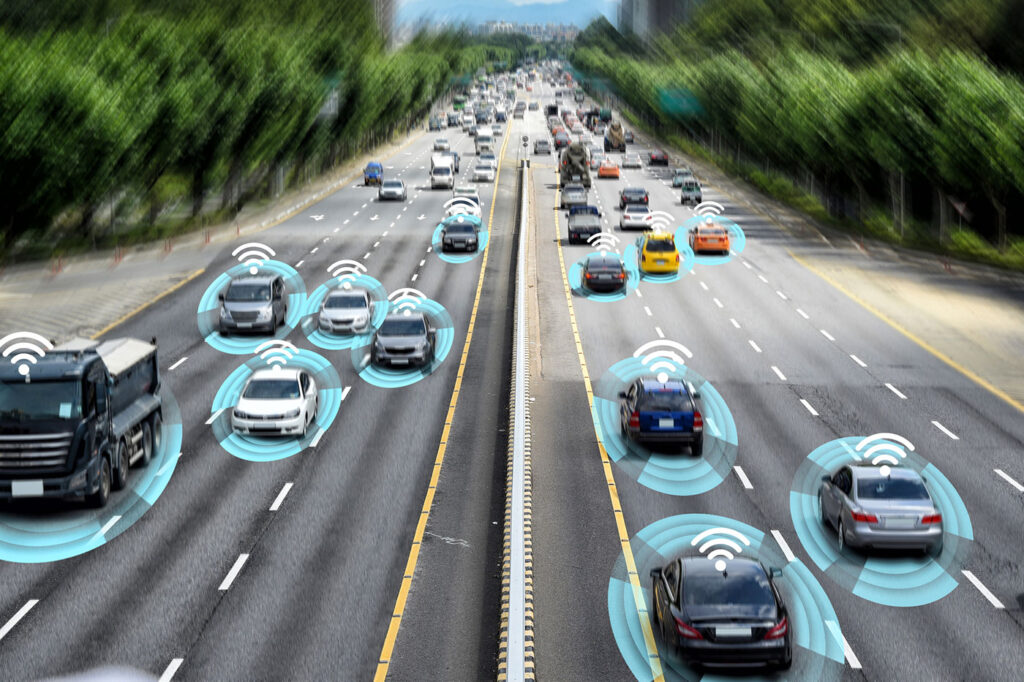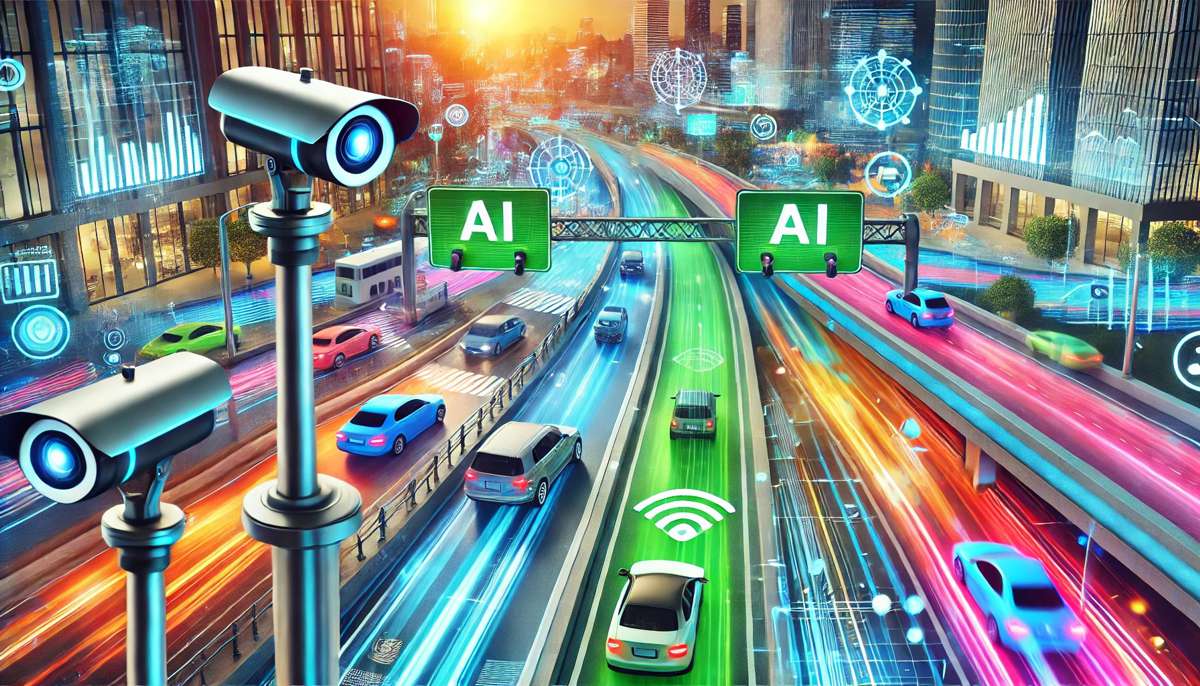Artificial Intelligence It is interesting to note that the determination of variable speed limits on US freeways now involves the use of Artificial Intelligence (AI). AI plays a significant role in this process and offers potential benefits for traffic management. Let’s delve deeper into how AI is impacting variable speed limits and the advantages it provides.
Artificial intelligence is revolutionizing the implementation of variable speed limits on US freeways, leading to improved traffic flow, safety, and efficiency. It’s important to explore the significance of AI in this crucial aspect of transportation infrastructure.
1. Today, we’ll be discussing the introduction of AI in variable speed limits on freeways.
The utilization of AI technology is enhancing variable speed limits on freeways, with the goal of improving traffic flow and safety. This innovation allows for real-time adjustments to speed limits based on factors such as traffic conditions and weather, ultimately creating more efficient and adaptable freeway systems.
The implementation of artificial intelligence in variable speed limits is an encouraging advancement in addressing ongoing traffic congestion and safety concerns on freeways.Artificial Intelligence By allowing for real-time adjustments to speed limits based on current traffic conditions, this technology has the potential to minimize traffic jams and enhance overall road safety. The integration of AI in managing traffic flow could revolutionize our approach to transportation and significantly shape the future of transportation.

The transportation industry is currently placing a significant focus on variable speed limits on freeways. With the anticipated introduction of AI technology, there is an expectation of a significant impact on this issue. Artificial Intelligence By implementing AI to dynamically adjust speed limits based on real-time traffic and weather conditions, transportation agencies are aiming to improve traffic flow, reduce congestion, and enhance overall safety. This innovation has the potential to revolutionize the way we control and regulate freeway speeds, ultimately creating a more efficient and safer driving experience for all.
2. We will explore the benefits of using AI in variable speed limits, such as improved traffic flow and safety.
The potential of artificial intelligence (AI) to greatly enhance variable speed limits on roadways is significant. By utilizing AI technology, traffic flow can be optimized and safety can be enhanced. This can result in decreased congestion, fewer accidents, and overall improved transportation efficiency. In this article, we will explore the numerous advantages of incorporating AI in variable speed limits and how it can positively influence our roadways.
Artificial intelligence utilized in variable speed limits offers several benefits, including improving traffic flow and safety. With the ability to analyze real-time traffic data and adjust speed limits accordingly, AI can help prevent congestion and reduce the likelihood of accidents. Understanding the advantages of AI in variable speed limits can demonstrate how this technology can positively impact transportation systems and enhance overall road safety.
AI technology can greatly improve variable speed limits on the road, leading to better traffic flow and increased safety for drivers. Artificial Intelligence By using AI to analyze live traffic data and modify speed limits as necessary, we can decrease congestion and the likelihood of accidents. Understanding these benefits can help us see the potential effects of incorporating AI into variable speed limit systems.
3. We’ll also address the challenges and concerns that come with implementing AI in variable speed limits
The implementation of AI in variable speed limits raises specific challenges and concerns that need to be carefully addressed. One of the main challenges is ensuring that the AI system can consistently and accurately monitor and adjust speed limits based on real-time traffic conditions. Artificial Intelligence There are also concerns about potential technological malfunctions or errors in the AI system, which could result in unsafe driving conditions. Additionally, there may be resistance from drivers who are accustomed to traditional, static speed limit signs. It is important to carefully consider these challenges and concerns in order to effectively implement AI in variable speed limits.

It is important to take into account the potential challenges and concerns that may arise when integrating AI into variable speed limits. These may include issues such as ensuring the accuracy of the data, managing potential resistance from drivers, and the need for continuous monitoring and adjustments. Addressing these challenges head-on can pave the way for a smoother and more successful integration of AI into variable speed limits.
Artificial Intelligence Variable speed limits are an effective method for managing traffic and enhancing safety. However, the integration of AI into these systems comes with its own set of challenges and concerns. These may include issues related to accuracy and reliability of the AI system, potential resistance from the public towards automated speed control, and the necessity for extensive testing and monitoring to ensure the system functions as intended. Transportation authorities must thoughtfully consider and proactively address these challenges in order to successfully implement AI into variable speed limits.
4. We’ll take a look at case studies of successful implementation of AI in variable speed limits
Artificial Intelligence The use of AI in variable speed limits has shown success in multiple case studies. For instance, in Boston, AI was used to analyze traffic data and adapt speed limits in real-time, leading to improved traffic flow, reduced congestion, and enhanced safety. Similarly, a German highway utilized AI to adjust speed limits based on weather and traffic conditions, resulting in fewer accidents and improved traffic efficiency. These examples demonstrate the potential of AI in optimizing variable speed limits for safer and more efficient transportation systems.
Studying real-life examples of AI implementation in variable speed limits can offer valuable insights into the advantages and challenges of using this technology. Artificial Intelligence By examining specific cases, we can gain a better understanding of how AI has been used to improve traffic flow, increase safety, and reduce congestion on roads with variable speed limits. These case studies can provide practical guidance for transportation authorities and policymakers looking to introduce similar AI-driven solutions in their own regions.

Studying successful case studies of AI implementation in variable speed limits can provide valuable insights into how this technology effectively manages traffic. By examining real-world examples, we can learn how AI algorithms dynamically adjust speed limits based on traffic conditions, ultimately improving road safety and traffic flow. These case studies can also reveal potential challenges and best practices for implementing AI in variable speed limits, providing important lessons for transportation authorities and policymakers.
5. Additionally, we’ll delve into future implications and innovations in AI for variable speed limits, discussing potential advancements in technology and infrastructure.
As technology continues to evolve, the integration of AI for variable speed limits shows promise for enhancing traffic management and safety. By utilizing AI algorithms and real-time data, speed limits can be adjusted to improve traffic flow, minimize congestion, and enhance road safety. Artificial Intelligence Additionally, this discussion will explore potential future advancements and innovations in AI for variable speed limits, including improvements in technology and infrastructure that could further optimize traffic management systems.

As technology advances, AI is becoming more influential in transportation, particularly in the implementation of variable speed limits. Artificial Intelligence This article will examine the future implications and potential innovations in AI for variable speed limits, as well as the impact on technology and infrastructure. Keep an eye out for an in-depth exploration of how AI could shape the future of speed limit regulation.
We will explore how AI can improve variable speed limits by considering potential technological and infrastructure advancements. This analysis will provide insight into how AI can enhance and optimize variable speed limits, leading to safer and more efficient roads in the future.
6. In conclusion, we’ll consider the potential of AI in transforming US freeways and its impact on traffic management and road safety.
The use of AI has the potential to greatly transform US freeways, with significant impacts on traffic management and road safety. By integrating AI technology, we can improve traffic flow, reduce congestion, and enhance overall road safety. Advanced AI systems also enable us to better predict and prevent accidents, ultimately leading to a more efficient and safer transportation system for everyone.

In summary, AI has the potential to significantly impact traffic management and road safety on US freeways. Through advanced technology and data analysis, AI could improve traffic flow, decrease congestion, and ultimately enhance driver safety. It is crucial to carefully consider the potential benefits and challenges of integrating AI in this context and to prioritize safety and efficiency in any advancements.
Artificial Intelligence AI technology has the potential to revolutionize US freeways by enhancing traffic management and improving road safety. Through real-time analysis of traffic patterns, AI can optimize traffic flow and minimize congestion. Additionally, AI can be utilized for predictive maintenance and early identification of potential hazards, ultimately enhancing road safety. The integration of AI technology is anticipated to bring about significant positive changes to the future of US freeways.
Interested in Reading My Article On:Easy money is a hurdle to tech innovation: Prof Ashok Jhunjhunwala, IIT Madras



